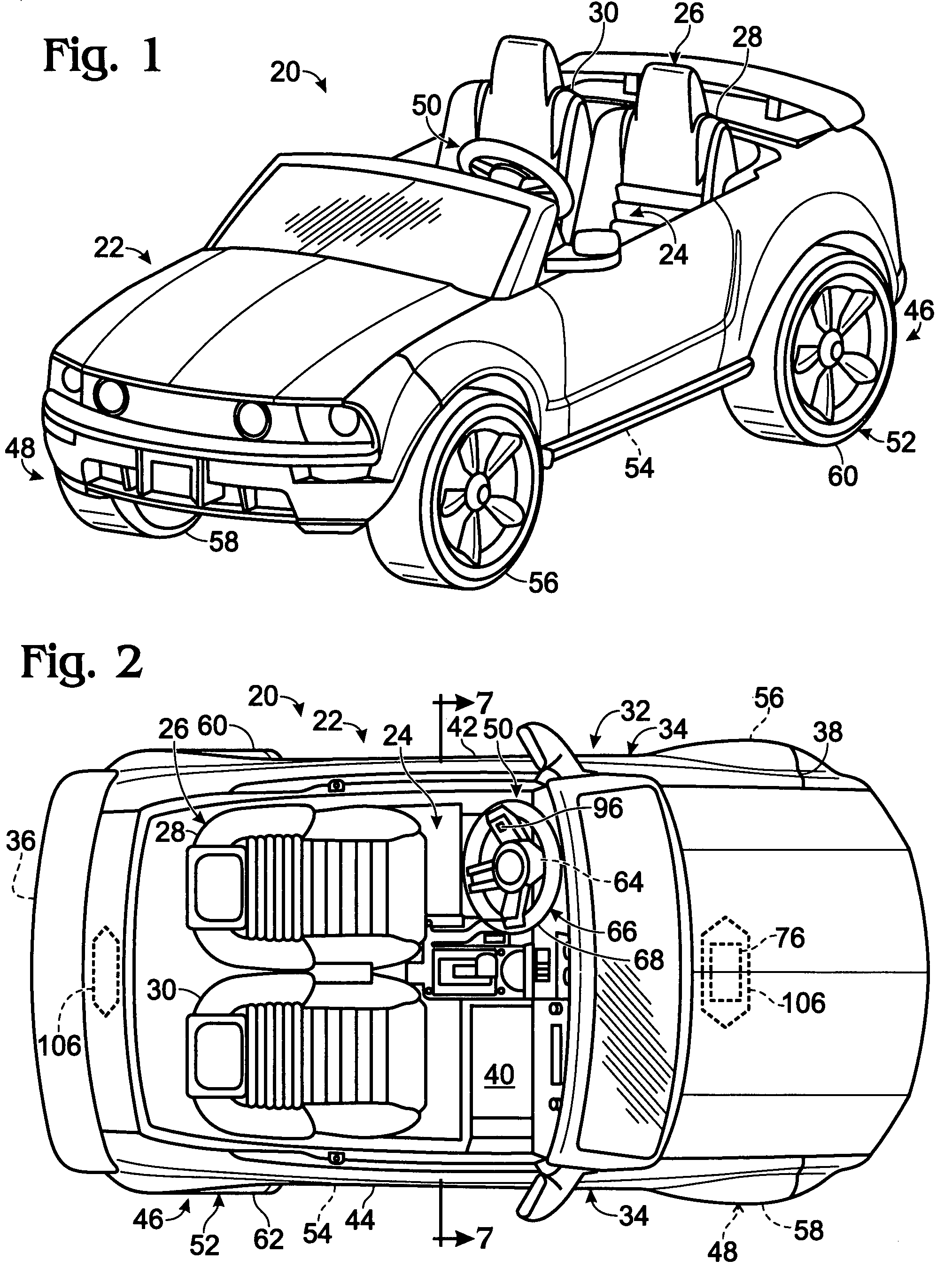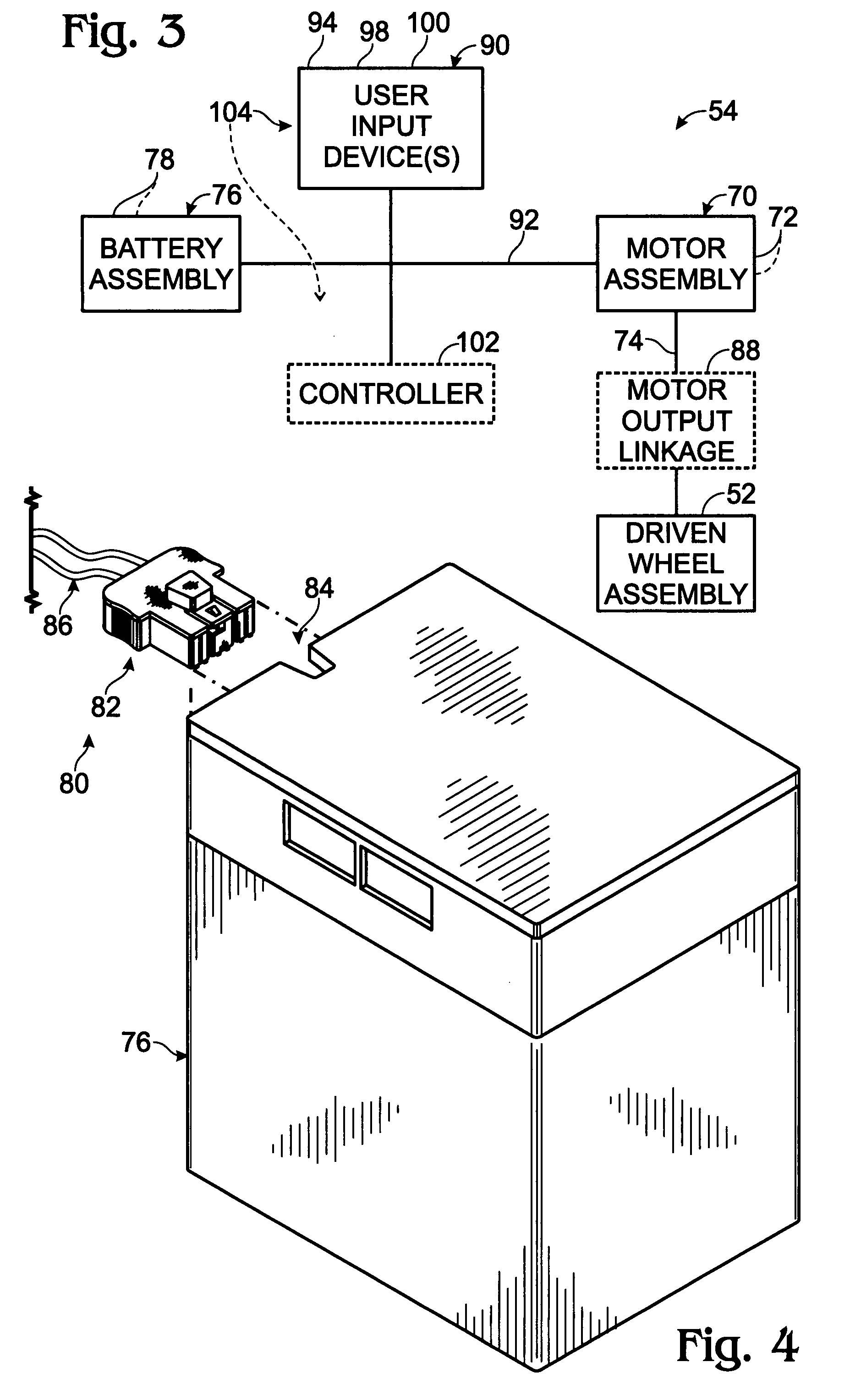Children's ride-on vehicles with reconfigured bodies and methods for forming the same
a technology for children's ride-on vehicles and bodies, which is applied in the field of children's ride-on vehicles, can solve the problems of mold body shape and appearance constraints, and damage to the body,
- Summary
- Abstract
- Description
- Claims
- Application Information
AI Technical Summary
Benefits of technology
Problems solved by technology
Method used
Image
Examples
Embodiment Construction
[0016]An illustrative, non-exclusive example of a children's ride-on vehicle with a reconfigured body according to the present disclosure is shown in FIGS. 1 and 2 and is indicated generally at 20. Ride-on vehicle 20 includes a reconfigured body 22 that defines, or defines at least a substantial portion of, a passenger region, or passenger compartment, 24. The compartment may include a seat assembly 26 that is sized and configured to accommodate at least one child, including a child driver. Seat assembly 26 may be integral with or otherwise mounted on body 22 and may have any suitable configuration, including configurations in which the position of the seat assembly is adjustable within the passenger compartment, and configurations in which the seat assembly includes only one seat, two or more seats, or two or more seating regions, among others. Typically, vehicle 20 will be sized for use by a child driver or by a child driver and a child passenger. For example, in the illustrated e...
PUM
 Login to View More
Login to View More Abstract
Description
Claims
Application Information
 Login to View More
Login to View More - R&D
- Intellectual Property
- Life Sciences
- Materials
- Tech Scout
- Unparalleled Data Quality
- Higher Quality Content
- 60% Fewer Hallucinations
Browse by: Latest US Patents, China's latest patents, Technical Efficacy Thesaurus, Application Domain, Technology Topic, Popular Technical Reports.
© 2025 PatSnap. All rights reserved.Legal|Privacy policy|Modern Slavery Act Transparency Statement|Sitemap|About US| Contact US: help@patsnap.com



